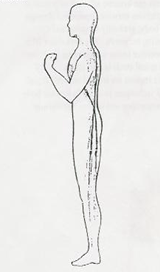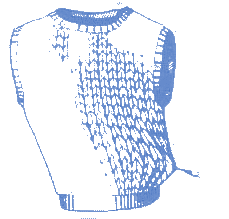Myofascial Release (MFR) is a mild form of stretching and balancing that has a profound effect on the body’s tissues at a deep level. MFR is sometimes very gentle, and because of its gentleness many people wonder how it could possibly work. However, MFR uses a complete range of pressures from “off the body” energy work to gentle pressure, to deep and very deep pressure when it is appropriate. You always have control of this pressure and no one has ever been injured.
Fascia (also called “connective tissue”) is a body system to which little attention has been paid to in the past. It is the tough, white membrane which we sometimes remove from meat before cooking. It is very strong, being able to withstand and exert a force of 2000 pounds per square inch.The fascial system extends from the toes to the top of the head, throughout the body, in a continuous spider web-like fashion. It surrounds all the tissues and organs of the body right down to a cellular level. Without the fascia, our body would crumple up into a pile on the floor.
The majority of the body’s fascia is oriented vertically. There are however four major crosswise (or transverse) planes which are extremely dense. These are the pelvic diaphragm, respiratory diaphragm, thoracic inlet and the cranial base. Sometimes all four planes can become effected over time as restrictions entwine themselves through the body, gradually torquing and twisting outwards. The dura mater (the connective tissue surrounding the brain and spinal cord) is also fascia. All of these regions can be treated with MFR and CST techniques to free restrictions and restore equilibrium.
 “Fascia Man”
“Fascia Man”
A problem in the back can pull on all the connected fascia and cause symptoms in distant areas.
Because our entire body is interconnected, when the fascia becomes compromised following any injury (such as surgery, birth, trauma, disease, inflammation, etc.) it can put tension on adjacent pain-sensitive structures, as well as creating a drag on distant areas. Long after the original complaint, some patients have bizarre symptoms that we can now identify as being caused by the fascial system—symptoms like burning, tingling, pulling, cramping, poor posture, difficulty breathing, and cranial symptoms. A visual analogy may be when you pull on your sweater at the bottom you can feel it “dragging” and tightening up around your neck and shoulders.
The “Sweater Effect”: any pulling in one place can create drag in distant areas.
We slowly tighten, losing our flexibility and spontaneity of motion, and setting ourselves up for more trauma and pain as we are pulled out of our three-dimensional orientation with gravity.
Sessions last an hour 1-to-1 with the physical therapist but by request may involve more than one therapist. An attuned therapist knows that “centeredness” and inner calm helps healing, and detects and follows the unwinding that naturally occurs as he or she works. Therefore, during the calming and relaxing sessions your body leads the therapist, who helps it find positions where it can heal itself.
The therapist becomes a facilitator rather than an enforcer, gently following the fascial unwinding, barrier after barrier, along the path of least resistance. Restoring equilibrium allows your self-correcting mechanisms to come into play and alleviate symptoms. MFR is used in combination with additional manual techniques and exercises—combining into a healing catalyst that yields clinically reproducible results.
John F Barnes, PT: Healing Ancient Wounds: The Renegade’s Wisdom.
John F Barnes, PT: Myofascial Release: The Search for Excellence.